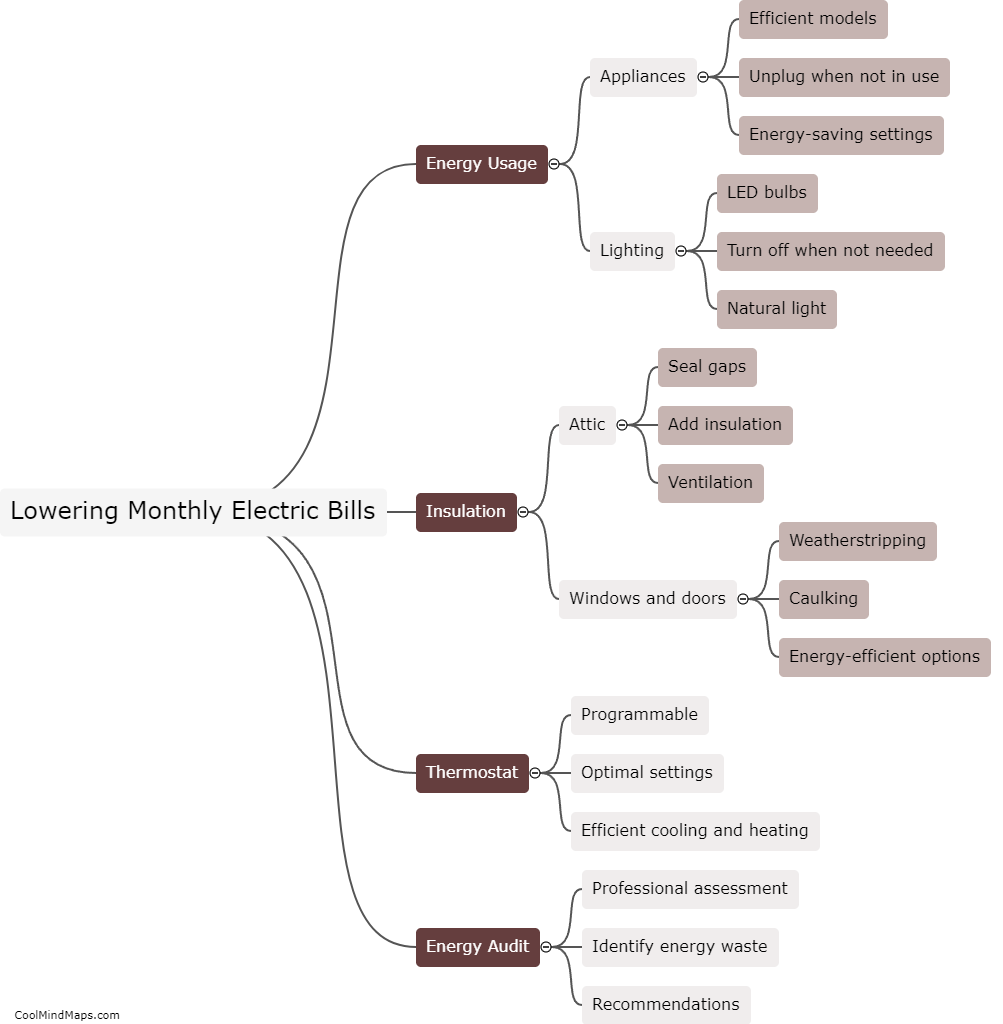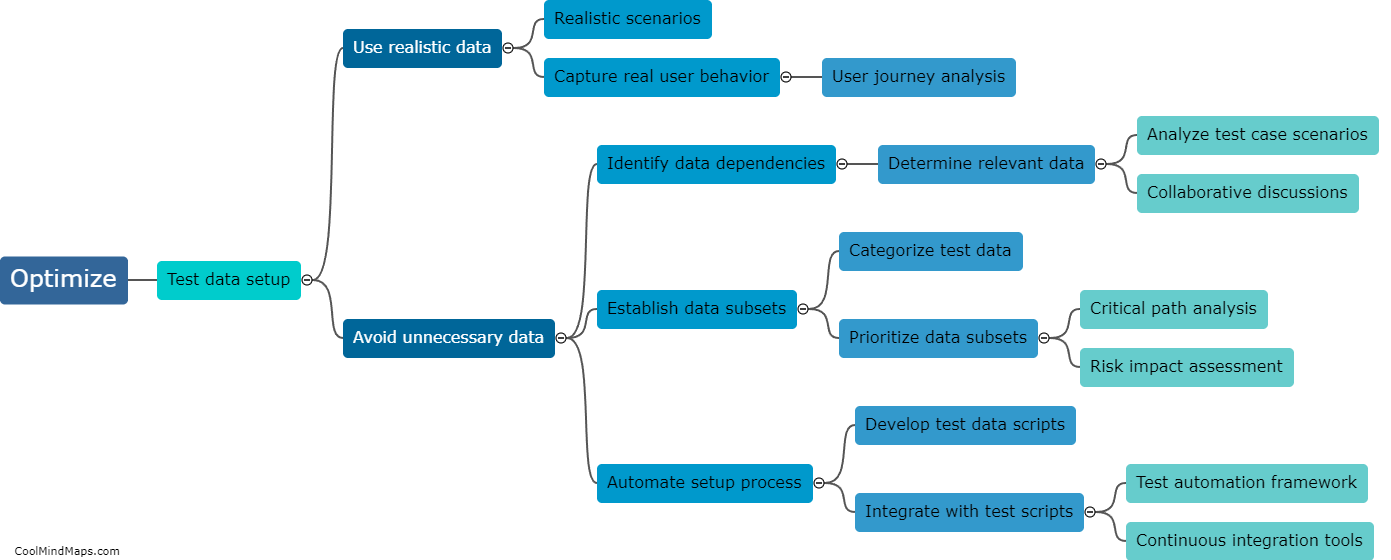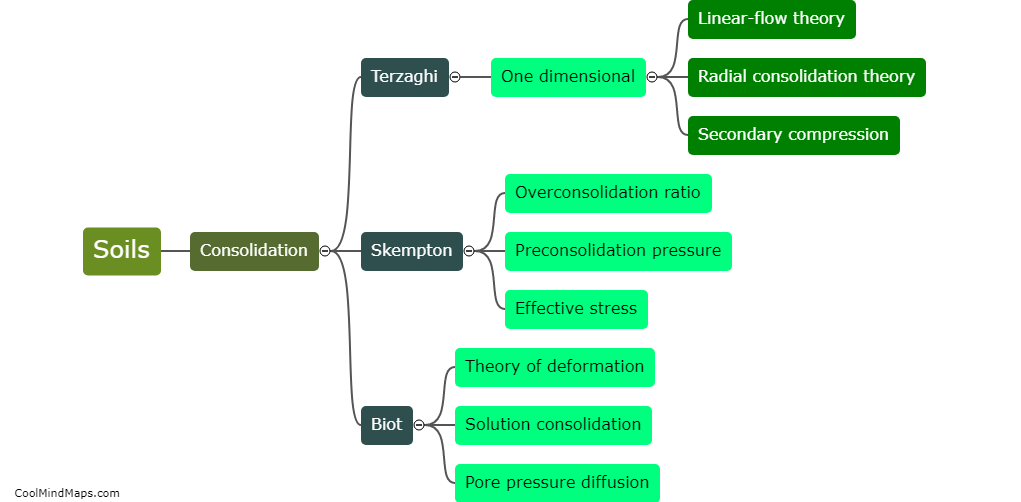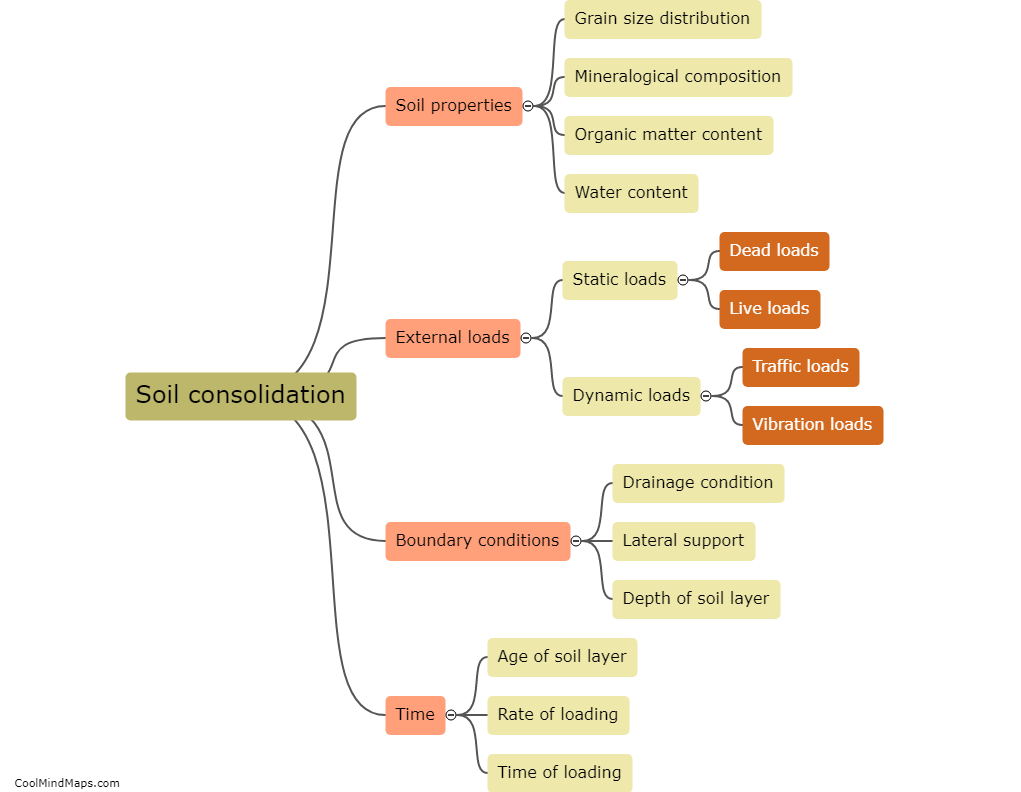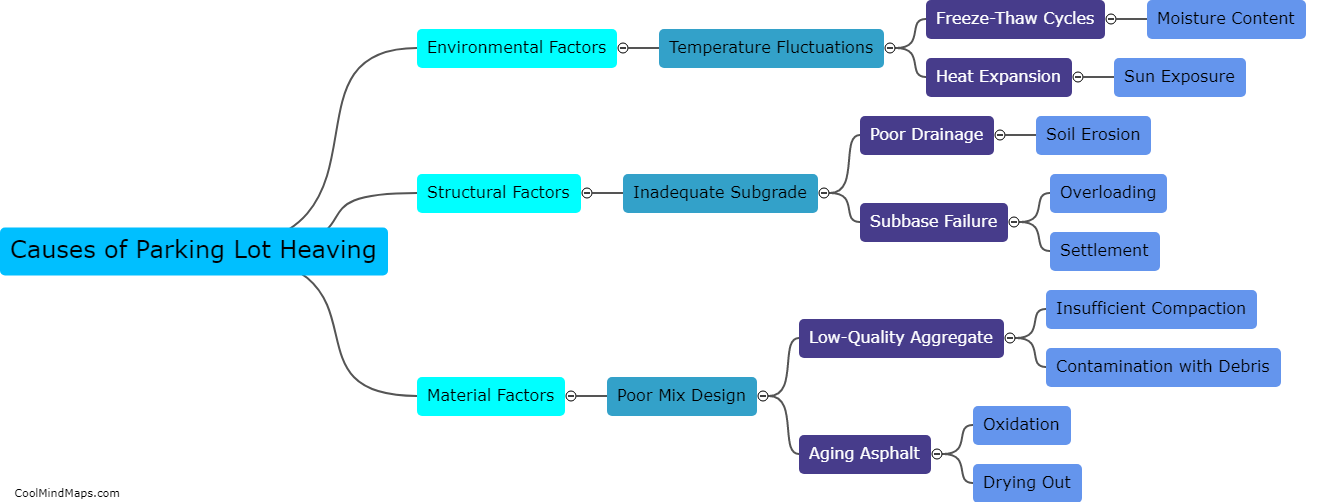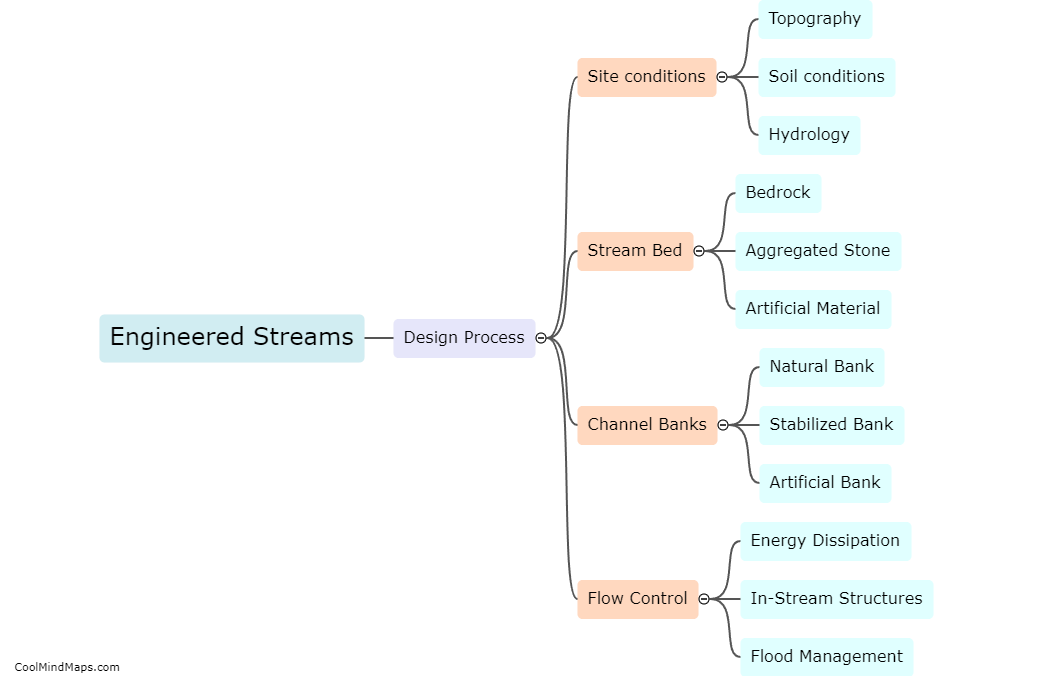What are the methods to measure secondary consolidation?
Secondary consolidation is the gradual and relatively slow compression of soil particles due to the expulsion of water from voids previously filled during primary consolidation. Different methods are used to measure the secondary consolidation of the soil; the most common method is to use the oedometer test. The oedometer test involves applying specific loads to the soil specimen and measuring its corresponding change in volume over time. In addition, the time required for 50% primary consolidation, or the recompression index, is used as an indicator of the secondary consolidation. Other methods such as field measurements, lab tests, and empirical correlations are also used to measure secondary consolidation. Proper measurement of secondary consolidation is essential in analyzing soil stability under varying loads and environmental conditions.

This mind map was published on 11 May 2023 and has been viewed 102 times.
